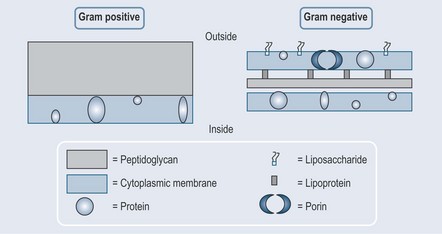Chapter 29 Antimicrobials
Bacterial Structure
The function of the cell wall of a bacterium is to:
• Maintain the cell’s characteristic shape: to prevent the phosphoplipid membrane of the cell wall from adopting a spherical shape.
Gram-Negative Bacteria
• Exhibit some flexibility in their nutritional needs, using inorganic nitrogen compounds, mineral salts and a simple carbon source for synthesis of their whole structure.
Gram-Positive Bacteria
• Gram-positive cocci or bacilli have more specific nutritional requirements. Several bacteria lack some synthetic abilities and require various amino acids, vitamins and accessory factors for growth
However, these characteristics do not always hold true:
• Some cocci, rickettsias, the Chlamydias and spirochaetes are Gram-negative and have exacting growth requirements.
• Mycoplasmas lack a rigid wall structure; although technically Gram-negative, they are a separate group.
Finding medication that is effective against these microorganisms is anything but straightforward.




